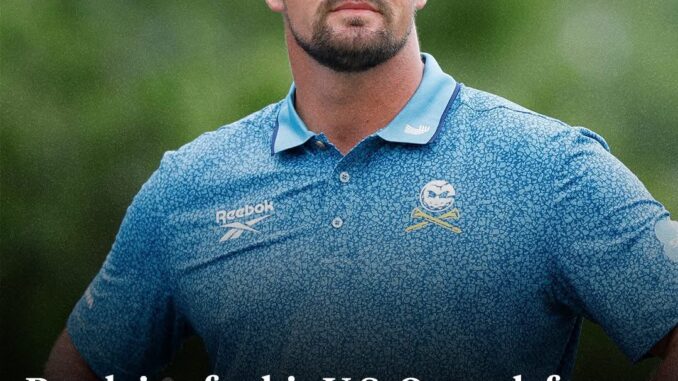
As Bryson DeChambeau gears up to defend his U.S. Open title, the golf world is once again turning its eyes to one of the most fascinating figures in the modern game. Known for his analytical mind, immense power off the tee, and unorthodox methods, DeChambeau has long set himself apart from his peers. Now, as he readies for the 2025 U.S. Open, he’s opening up about one of his most legendary habits: his marathon driving range sessions.
In a recent feature with Golf Digest, DeChambeau shared the compelling backstory of how these grueling, hours-long practice routines became a cornerstone of his training. The inspiration? A mix of scientific curiosity, relentless drive for improvement, and an early-career moment that would go on to shape his entire philosophy toward the game.
The Origin of the Grind
DeChambeau explained that the idea of pushing his body and mind to extremes on the range began when he was a young pro trying to find an edge. After struggling with consistency and watching his peers outpace him with raw distance, he decided to take a data-driven approach to swing speed and ball striking. But the turning point came late one night during a particularly frustrating session.
“I remember being the last one on the range,” DeChambeau recounted. “The lights were off, my hands were bleeding, and I just kept swinging. I wasn’t chasing perfection—I was chasing understanding. I wanted to know how far I could go before my body gave out.”
That session planted the seed for what would become his hallmark: hours of relentless hitting, experimenting with every variable from swing plane to wrist angle, tracking every metric. “It wasn’t about muscle memory—it was about building an engine that could endure,” he said.
Science Meets Sweat
Armed with launch monitors, biomechanics data, and a team of coaches, DeChambeau turned his marathon sessions into a scientific lab. His goal? To optimize every facet of his swing and unlock levels of distance that had never been seen in competitive golf. These sessions often lasted five to eight hours, sometimes longer.
But while the science was crucial, DeChambeau says it was the mental toughness built during these sessions that truly made the difference. “Anyone can lift weights or swing fast. But staying committed when it hurts, when you’re exhausted, when the results aren’t coming—that’s when champions are made.”
Results That Speak
The results speak for themselves. DeChambeau stormed to a dominant victory at the 2020 U.S. Open and has remained one of the most talked-about players in golf ever since. His strategy, particularly on long, difficult courses, is now studied and emulated by others on Tour.
Now, as he prepares for his 2025 title defense, he’s bringing the same intensity back. But this time, there’s a deeper maturity behind the grind. “I’ve learned to balance obsession with recovery, to listen to my body more,” he said. “But the spirit of those range sessions—that relentless pursuit of better—is still there.”
The Takeaway
Bryson DeChambeau’s story is one of transformation—not just of a swing, but of a mindset. In a sport that rewards precision and patience, he’s shown that innovation, endurance, and raw willpower still have their place. As he tees it up at the U.S. Open again, fans can expect the same intensity, the same drive—and maybe a few more marathon sessions under the lights.